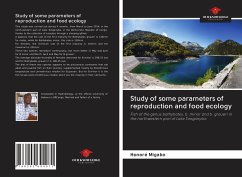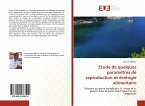This study was carried out during 4 months, from March to June 2014; in the north-western part of Lake Tanganyika, in the Democratic Republic of Congo, thanks to the collection of samples through a sleeping gillnet.It appears that the size of the first maturity for Bathybates graueri is 126mm for males, while for Bathybates minor, this size is 130mm.For females, the minimum size of the first maturity is 155mm and the maximum is 201mm.These two species reproduce continuously, but much better in May and June for B.minor and March, April and May for B.graueri.The average absolute fecundity of females observed for B.minor is 298,75 ova and for Bathybates graueri it is 190,25 ova.The diet of these two species appears to be piscivorous carnivores that eat adult and juvenile fish on their journey, supplemented mostly by Stolothrissa tanganyicae and Limnothrissa miodon for B.graueri. But for B.minor it is the fish larvae and Limnothrissa miodon which are the majority in their stomachs.
Hinweis: Dieser Artikel kann nur an eine deutsche Lieferadresse ausgeliefert werden.
Hinweis: Dieser Artikel kann nur an eine deutsche Lieferadresse ausgeliefert werden.








